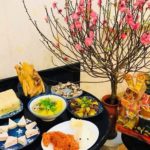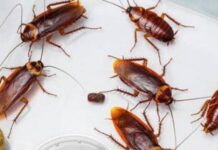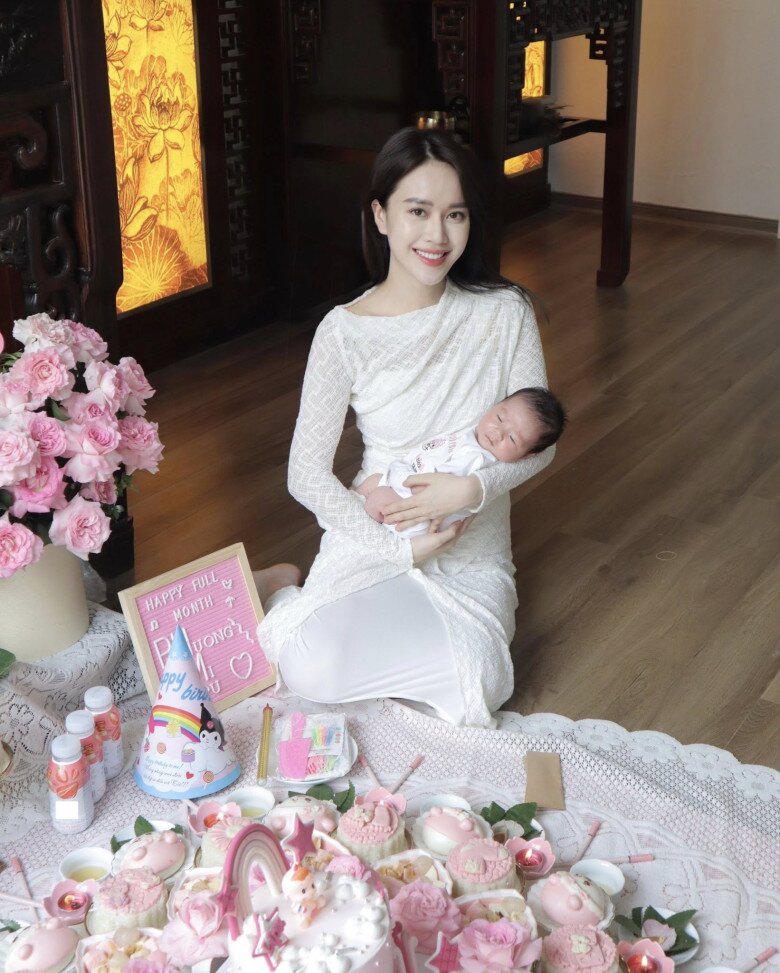
Since becoming a first-time mother, the famous VTV host has received much attention and praise for her parenting skills. Not long ago, she surprised everyone by announcing the birth of her second child with her husband, a scholar. Ngo Mai Phuong’s small family now has a “complete” pair of children.
At the one-month celebration held in their new nine-story villa, the host also revealed the face of her little princess, Lipu, for the first time. The mother of two held her baby girl and took adorable photos next to the pink offerings prepared by the family for the baby’s one-month celebration.
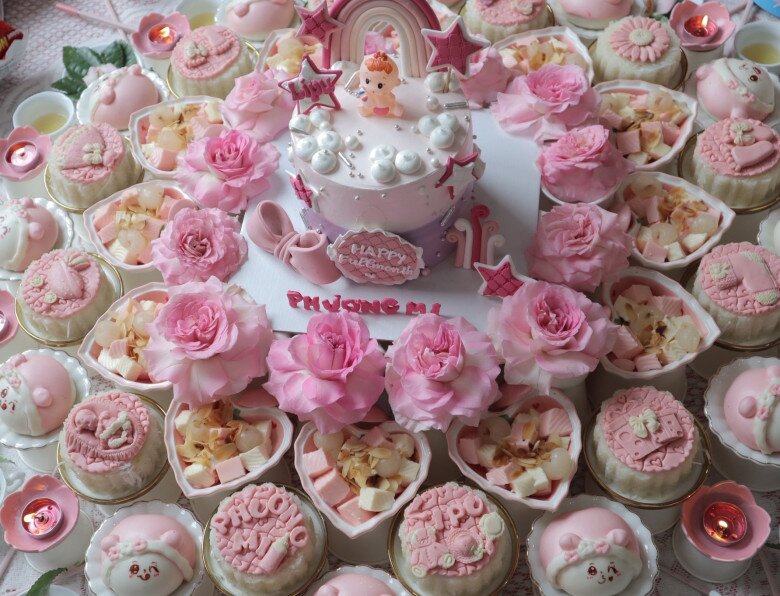
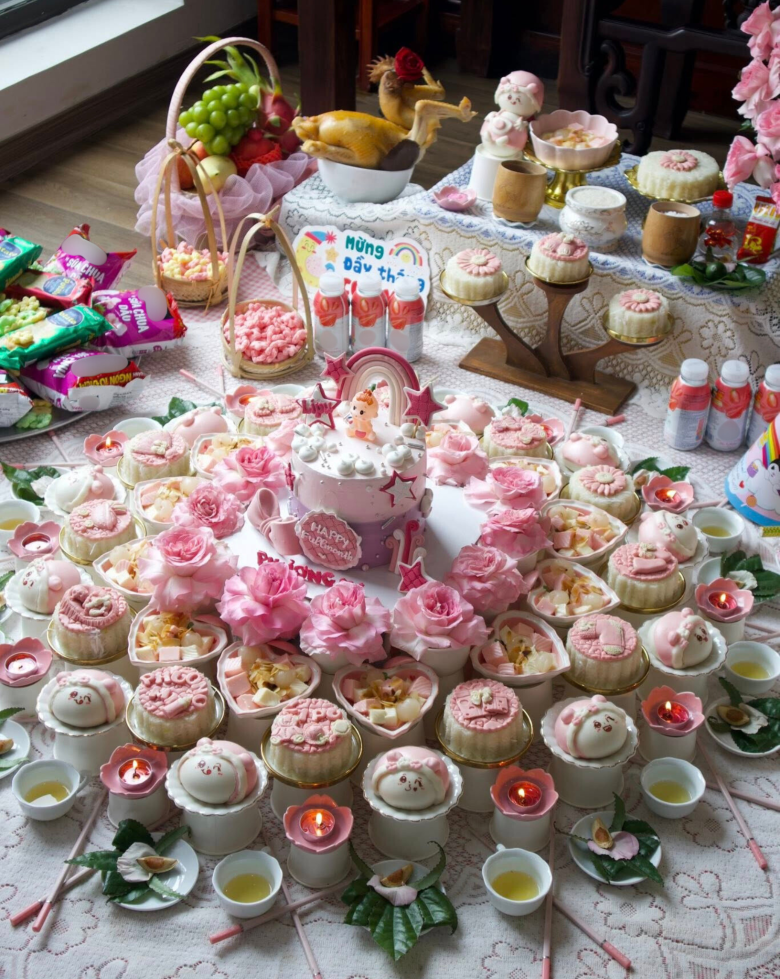
Although it looked simple and not overly extravagant, the offerings were complete and plentiful. The ritual items were carefully prepared and included chicken, sticky rice, sweet soup, steamed buns, cakes, fruits, flowers, betel leaves, and areca nuts, all beautifully arranged.
After sharing the happy moments from the one-month celebration with her little princess, MC Ngo Mai Phuong received many compliments and well-wishes from everyone. Everyone wished for baby Lipu to grow up healthy and continue to be blessed with good fortune.
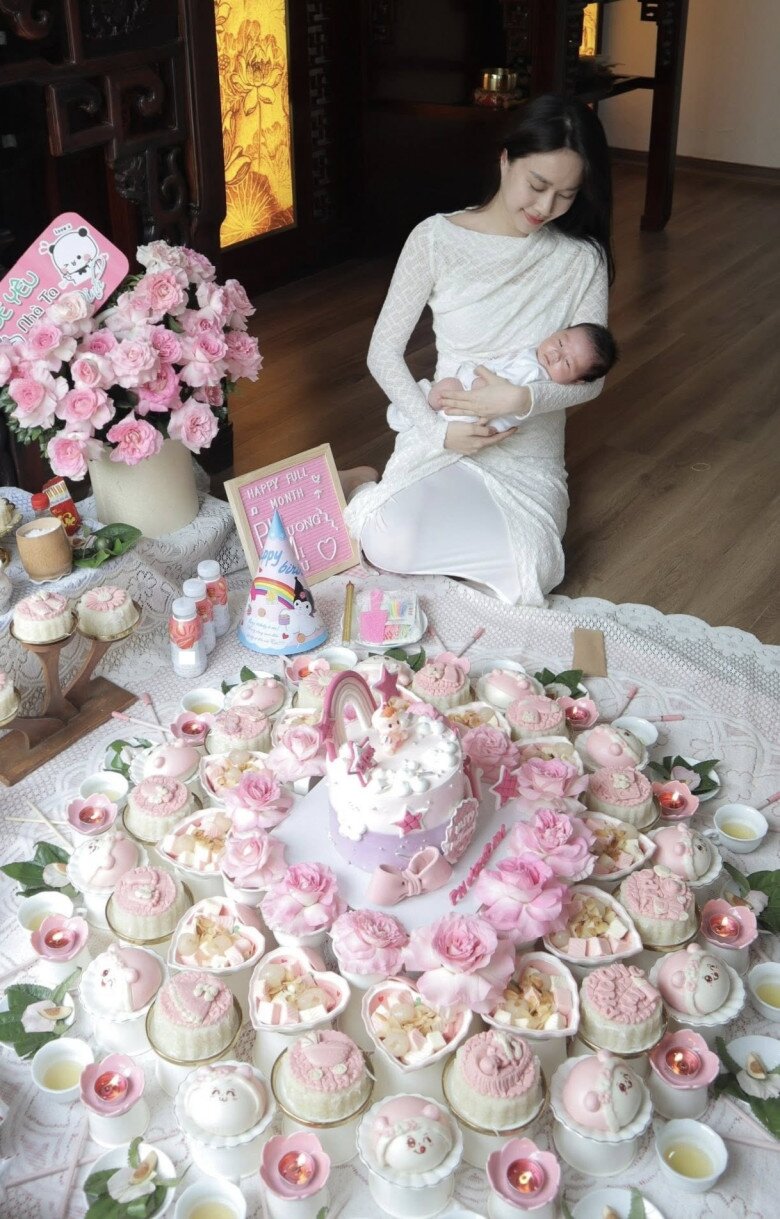
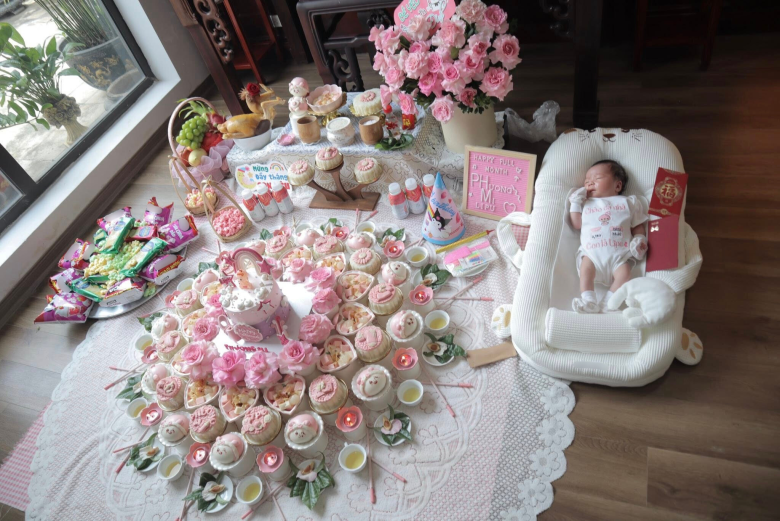
What is the Mụ Ceremony (also known as the One-Month Celebration)?
The Mụ Ceremony is a traditional ritual to give thanks and pray for blessings from the Mụ, who are believed to be fairies in charge of childbirth and shaping the child, according to folk beliefs.
The Mụ Ceremony is practiced by several Asian cultures, including the Vietnamese, and is typically held on the third day after birth (end of confinement), one month after birth (one-month celebration), 100 days after birth (one-year-old celebration), and one year after birth (first birthday).
Offerings
A plate of betel leaves with phoenix wings used in the Mụ Ceremony, consisting of 12 small pieces and one larger piece
In the Mụ Ceremony ritual, preparing the offerings is of utmost importance and must be done carefully and thoughtfully. The offerings for the Mụ Ceremony in Vietnamese culture typically include:
– Paper votive objects
– Betel leaves and areca nuts
– Children’s toys
– Live animals: crabs, snails, or shrimp, either left alive or steamed. There should be 12 animals of equal size and one larger animal, or three small animals if a larger one is not available. These are placed in a bowl for the ceremony and then released into a pond or lake afterward.
– Cakes and candies: Divided into 12 equal portions and one larger (or extra) portion.
– Savory dishes: Sticky rice, boiled chicken, rice, soup, other dishes, and white wine
– Sweets and snacks: Divided into 12 portions and one larger (or extra) portion.
– Incense and flowers: Incense, colorful flower vases, paper money, and clear water.
Arranging the offerings
In addition to preparing the offerings, mothers also need to pay attention to the proper arrangement of the one-month celebration offerings for their children.
Following the customs passed down by our ancestors, the offerings should be arranged on two trays. One tray should be placed on top of the other, with a distance of no more than 10 cm between them. The placement of the trays should follow the principle of “East for the flower vase and West for the offerings.”
Prayers
Prayers for the baby’s one-month celebration are an important part of wishing for the child’s good health.
In the past, people believed that the health and safe delivery of a baby were largely due to the Mụ, who was responsible for shaping the child. This ceremony also introduces the new family member to the extended family and clan.
Incense offering and prayers
After arranging the offerings, an adult representative of the family will light incense and pray:
“Today, on the (day)… of the (month)… (year)…, our (grand)child, (name)…, turns one month old. We present these offerings to invite the Twelve Mụ and Three Virtues to witness and accept our gratitude. We also pray for your continued blessings for (name)… to be strong and healthy, to grow up quickly, and to be well-behaved. We ask for your blessings for our family’s peace and happiness.”
The one-month celebration ceremony is a unique traditional cultural practice passed down from generation to generation. It expresses the wish for the child’s healthy growth and also reflects the ancestor worship and spiritual beliefs of the Vietnamese people.


























